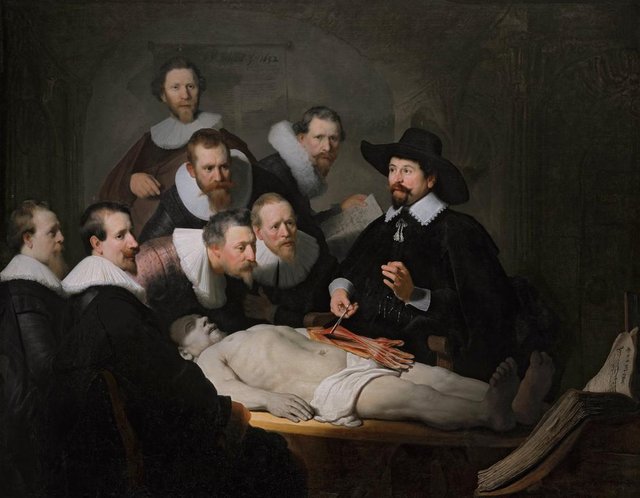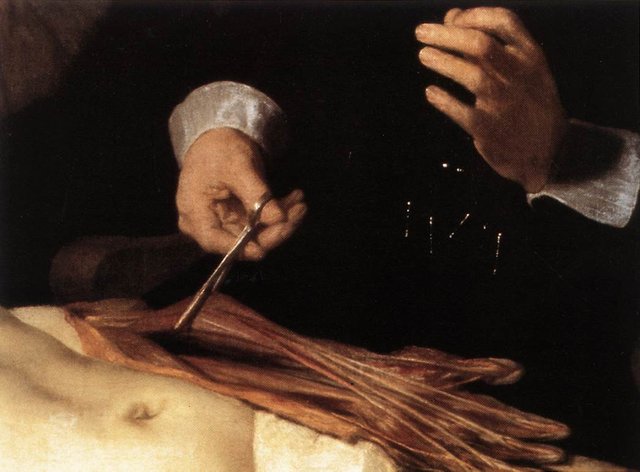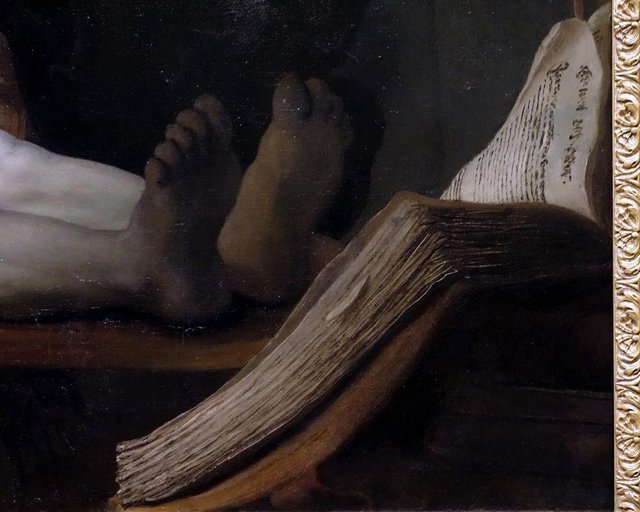[ART] The Anatomy Lesson of Dr. Nicolaes Tulp 🎨
Fun, spectacle and drama before an audience may not be words that we associate with the teaching of anatomy today. It in fact sounds absolutely absurd. But they well describe the public demonstrations of dead human bodies that became increasingly important in Europe during the 17th century. One might wonder if it was a sincere quest for knowledge of human physiology or whether it was mere macabre sensationalism that attracted a wider audience. The increasing interest also attracted many artists that portrayed the more or less spectacular dissections. The painter Rembrandt van Rijn signed the most famous artworks depicting such a scene.
In 1632, the young Rembrandt was commissioned by members of the Amsterdam Guild of Surgeons to depict when their chief anatomist Dr. Nicolaes Tulp performed his second public anatomy. Dr. Tulp, who held the title of praelector chirugic et anatomiethe, was a most reputable man who belonged to the top elite of Amsterdam. This group portrait - known as The Anatomy Lesson of Dr. Nicolaes Tulp - was Rembrandt's first major artistic commission since moving to Amsterdam.

The artwork reflects the increasing importance of science and medicine in the early 1600s. During the previous centuries, anatomy education was primarily theoretical and speculative, i.e. based on text knowledge rather than direct physical and practical education. At the medical academies around Europe, it was common with reading out of ancient writings during the anatomy lessons. Autopsies of human bodies occurred only on rare occasions. A person, usually without medical education, cut the body open and demonstrated the various organs as the description of them were read out from the works of the authorities.
A large number of black-clad men have gathered around the dead body - the pale, gray and statue like body of Aris Kindt, a man convicted for armed robbery and executed by hanging the same day. The two main characters of the painting - Dr. Tulp and the corpse - have completely different statuses, one master of medicine, the other reduced to a dead medical object. Tulp is wearing a wide brimmed hat to signify hus significant role as the chairman of the guild. Like the spectators in the image, the viewers of the painting immediately understands that it is Dr. Tulp who owns the scene.

After the muscles in the left arm of the body have been exposed, Tulp, with the help of a forceps, gets a firm grip of the muscles and tendons of Aris Kindt, while explaining the function of the motoric muscles. It has been disputed whether Rembrandt really depicted a public autopsy as they were performed during the time. Usually the intestines were first cleared by an incision in the abdomen. This is depicted in The Anatomy Lesson of Dr. Deijman from 1656 - Rembrandt's depiction of Dr. Tulp's successor - as well as in several other contemporary artworks. Probably Tulp wanted to emulate his greatest role model Andreas Vesalius, which was the first anatomist who exposed the tendons and muscles of the arm.
For the guild members it was essential that each one got a prominent position in the picture. It was important not only to see but also to be seen. The guild members, gathered around the head of the body, constitute a demarcated unit on the left, while Dr. Tulp sits alone on the right side at the feet of the corpse. By letting the face and feet of the body rest in shadow, the light focuses on the essential parts of the body for the lesson at hand.

In Rembrandt's painting we can see at least one anatomical atlas. In the autopsy, the theory of the book was transformed into practice according to the new anatomical approach. What was written in the textbooks was confirmed or corrected by the eye. The human eye has a prominent role in the painting. Rembrandt himself believed that it was thanks to the artist's optics in conjunction with the gaze of the viewer that man could of be understood. The eye was considered to be the foremost of the sensory organs. Tulp's face is heavily illuminated, and his eyes reflect the great commitment he has for his profession and for the knowledge he will convey. The men around Dr. Tulp have their eyes aimed at different points. Only one of the guild members seems to regard the dead body. Perhaps the others, despite their interest, feel a certain discomfort. The eyes of the body are on the other hand covered by shadow. They are closed and obscured by a member of the guild who leans forward to get a better view.
By studying the circumstances surrounding Rembrandt's interpretation of Dr. Tulp's anatomy lesson, we get a glimpse of the medical perception of the human body in the 17th century. The basic idea was, of course, that the autopsy would contribute to an in-depth understanding of human anatomy. But there was also another purpose. The public autopsy was considered a "purification ritual", where criminals after execution had their bodies freed from their sinful deeds.
 @SteemSwede
@SteemSwede
Sources:
Hugh Aldersey-Williams (2013) Anatomies: A Cultural History of the Human Body
Carla Mazzio, David Hillman (1997) The Body in Parts: Fantasies of Corporeality in Early Modern Europe
Alois Riegl (1999) The Group Portraiture of Holland